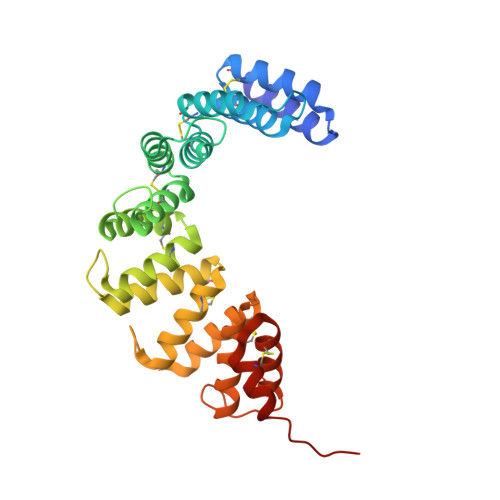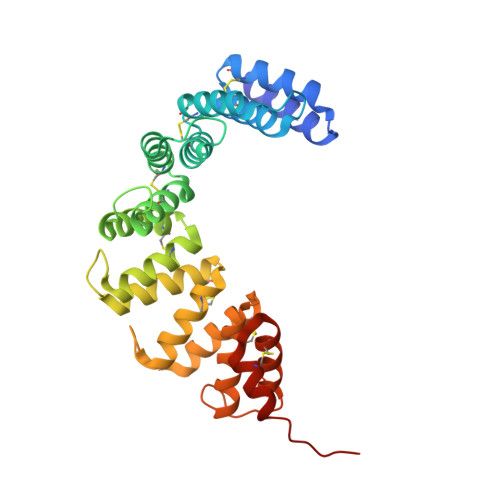The Crystal Structure of Helicobacter Cysteine-rich Protein C at 2.0A Resolution: Similar Peptide-binding Sites in TPR and SEL1-like Repeat Proteins
Luethy, L., Grutter, M.G., Mittl, P.R.(2004) J Mol Biology 340: 829-841
- PubMed: 15223324
- DOI: https://doi.org/10.1016/j.jmb.2004.04.055
- Primary Citation of Related Structures:
1OUV - PubMed Abstract:
Helicobacter pylori is a Gram-negative human pathogen that infects the gastric mucosa and causes an inflammatory process leading to gastritis, ulceration and cancer. Bacterial cell-surface and secreted proteins often play an important role in pathogen-host interactions and are thought to be selective mediators for the pathology of the infection. The Helicobacter cysteine-rich proteins (Hcp) represent a large family of secreted proteins that seem to be specific for microorganisms from the epsilon-subfamily of proteobacteria. Although significantly elevated levels of anti-Hcp antibodies were observed in many patients infected with H.pylori, details on the biological functions of Hcp proteins are sparse. Hcps belong to a large family of Sel1-like multi-repeat proteins. The crystal structure of HcpC was refined at 2.0 A resolution and revealed a super-helical topology composed of seven disulfide bridged alpha/alpha-repeats, an N-terminal capping helix and an extended C-terminal coil consisting of alternating hydrophobic and hydrophilic residues. In the crystal packing, the C-terminal coil interacts with the concave surface of a symmetry-related HcpC super-helix. A hydrophobic pocket and a cluster of negatively charged residues recognize the side-chains of Val290 and Lys287 from the C-terminal coil, respectively. The peptide nitrogen atom of His291 forms a short hydrogen bond with the side-chain of Asn66. The interactions seen in this crystal contact are strikingly similar to the peptide-binding modes of the Hsp70/Hsp90 organizing protein and the PEX5 receptor. The conservation of the peptide-binding mode suggests that HcpC might recognize its binding partner in a similar way.
Organizational Affiliation:
Biochemisches Institut, Universität Zürich, Winterthurer Strasse 190, 8057 Zurich, Switzerland.


















